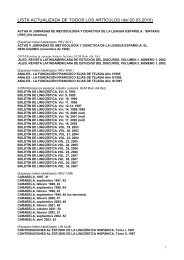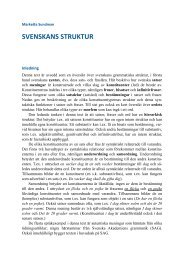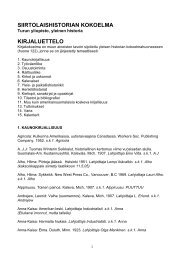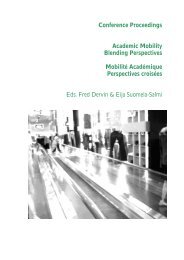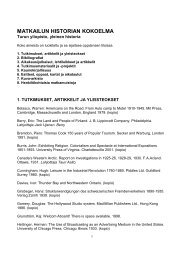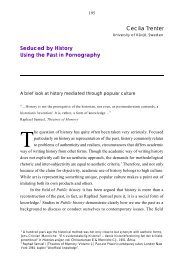Style sheet (pdf)
Style sheet (pdf)
Style sheet (pdf)
You also want an ePaper? Increase the reach of your titles
YUMPU automatically turns print PDFs into web optimized ePapers that Google loves.
Hale (2008: 9) explains that we “need a theory of ethnicity grounded solidly in<br />
psychological research on human behavior”, and that relational theory is of use in<br />
that regard.<br />
Note that, unlike Finnish, the final full stop in English is always placed after the<br />
reference (except in block quotations), regardless of the scope of the reference:<br />
Accordingly, he states: “[cohesion] may be crudely defined as the way certain words<br />
or grammatical features of a sentence can connect to its predecessors (and<br />
successors) in a text” (Hoey 1991: 3).<br />
Quotations longer than three lines are known as „block quotations‟ and should be<br />
arranged in the same way as examples: set off from the main text by blank lines<br />
before and after, single-spaced, and indented, the font size should be smaller<br />
(usually 10 if you are using 12 in the main text). Quotation marks are not used with<br />
block quotations, but the source reference is supplied. The example below is<br />
formatted correctly:<br />
Goodman has expressed this very well:<br />
When the world is lost and correspondence along with it, the first thought is usually<br />
coherence. But the answer cannot lie in coherence alone; for a false or otherwise wrong<br />
version can hold together as well as a right one. Nor do we have any self-evident truths,<br />
absolute axioms, unlimited warranties, to serve as touchstones in distinguishing right<br />
from among coherent versions; other considerations must enter into that choice.<br />
(Goodman 1984: 37)<br />
This line of thinking can be found later in other writers, too...<br />
5.2.2.1 Differences between American and British English<br />
The British style of positioning punctuation in relation to the closing quotation mark<br />
consistently follows the following rule: if the punctuation mark belongs to the quoted<br />
material, it is placed within the closing quotation mark; if it belongs to the including<br />
sentence, it is placed after the quotation mark. The American style follows this rule<br />
for exclamation marks and question marks, but not for commas and full stops. Both<br />
are placed outside the quotation marks only in rare instances where confusion is<br />
likely.<br />
6




